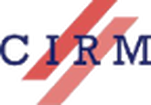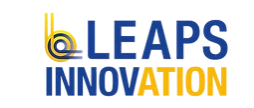WORKSHOP
X-ray Bragg ptychography: an inverse diffraction 3D imaging approach for crystalline materials
Ptychography de Bragg aux rayons X : imagerie 3D par diffraction inverse des matériaux cristallins
2 – 3 September, 2025
Organizing Committee
Comité d’organisation
Marc Allain (Institut Fresnel, Aix-Marseille Université)
Clément Atlan (ESRF, Grenoble INP – UGA)
Dina Carbone (MAX IV Laboratory, Lund)
Virginie Chamard (Institut Fresnel, Aix-Marseille Université)
Vincent Favre-Nicolin (ESRF, Grenoble INP – UGA)
3D Bragg ptychography (3DBP) is a powerful crystalline microscopy method, capable of producing tridimensional maps of crystalline materials down to 10 nm spatial resolution, by leveraging the impressive coherence properties of X-ray beams produced at 4th generation sources. It allows the investigation of extended, rather complex crystals, filling the gap between electron microscopy and Bragg coherent diffraction imaging and represents an unparalleled research tool for all kind ofcrystalline materials.
Mathematically, this inverse problem-based method provides access to the phase of the diffracted field from intensity informa@on only. However, the specificity of the Bragg geometry and the difficulty related to the retrieval of complex displacement fields have inhibited the development of the method towards the synchrotron user community, so far.
In the framework of the LEAPS INNOV EasyBragg funded project “Implementation of user-friendly 3D Bragg ptychography at synchrotron sources- EASYBRAGG”, an user-oriented code has been developed, tested and implemented at several beamlines in Europe. This hands-on tutorial workshop aims at delivering to potential Bragg ptychography users all the needed knowledge to design and perform their Bragg ptychography experimental campaigns and fully analyse the produced data-sets directly at the beamline or at their home institutes.
Through this workshop, the EasyBragg consorutim hopes to contribute to the profitability of economic and technological investments in 4th generation sources, currently being developed at the international level.
La ptychographie de Bragg 3D (3DBP) est une méthode de microscopie cristalline puissante, capable de produire des cartes tridimensionnelles de matériaux cristallins jusqu’à une résolution spatiale de 10 nm, en exploitant les nouvelles propriétés de cohérence des faisceaux de rayons X produits par des sources de 4ème génération. Elle permet l’étude de cristaux étendus et complexes, comblant ainsi le fossé entre la microscopie électronique et l’imagerie par diffraction de Bragg des rayons X cohérents et constitue un outi de recherche inégalé pour tous types de matériaux cristallins.
Mathématiquement cette méthode, basée sur la résolution d’un problème inverse à partir de la seule connaissance de l’intensité, permet d’accéder à la phase du champ diffracté. La spécificité de la géométrie de Bragg et la difficulté liée à l’extraction de champs de déplacement complexes ont jusqu’à présent freiné le développement de cette méthode auprès des utilisateurs de synchrotron.
Dans le cadre du projet EasyBragg, financé par LEAPS INNOV, « Mise en œuvre d’une ptychographieBragg 3D orientée-utilisateurs sur sources synchrotron – EASYBRAGG », un code utilisateur a été développé, testé et implémenté sur plusieurs lignes de lumière en Europe. Cet atelier vise à fournir aux utilisateurs potentiels de la ptychographie Bragg toutes les connaissances nécessaires pour concevoir et réaliser leurs campagnes expérimentales, et pour analyser les données sur les lignes de lumière ou dans leurs instituts d’origine.
Grâce à cet atelier, le consortium EasyBragg espère contribuer à la rentabilisation des investissements économiques et technologiques des sources de 4e génération, développées actuellement au niveau international.
LECTURES
Virginie Chamard (Institut Fresnel, Aix-Marseille Université) Introduction to Bragg ptychography
Dina Carbone (MAX IV Laboratory, Lund) Experimental implementation
Marc Allain (Institut Fresnel, Aix-Marseille Université) Numerical inversion of 3DBP data set
Clément Atlan (ESRF, Grenoble INP – UGA) General overview of the 3DBP code



